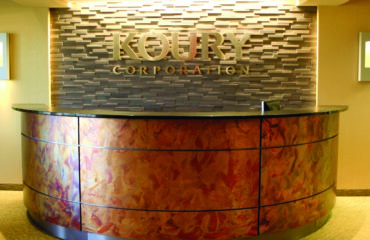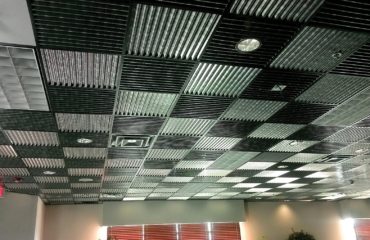Our Favorite Trends in Translucent Design Materials
Let’s Be Clear
Architects and interior designers love to use translucent materials in commercial and residential spaces for its ability to blend into the design of almost any room without blocking light. Translucent design elements can include wall panels, retail displays, and room dividers as well as cabinet inserts and furnishings. While colors and finish material trends change over time, light is almost always the desired feature, and the use of translucent materials will keep any space light and airy.
Where it Started
Beginning with the growth of postmodernism in the 1960s, materials like plastics, laminates, and recycled materials have become regularly used in design. More recently, clear plastics and polycarbonates have become exceptionally popular for interior and architectural elements, becoming more translucent to allow for light and more open-feeling spaces. Fiberglass reinforced plastics (FRP) and resins are just some of the materials used in translucent applications where decorative elements are to be highlighted.
Bringing in Nature
Resin panels are often used as an alternative to traditional decorative glass. Many manufacturers such as 3FORM offer resin panels encapsulating organic materials such as grasses or fibers to create a unique and organic look. Resin is often heat formable and available in custom sizes and gauges, but it can also be heavy and expensive.
Making it Durable and Affordable
Fiberglass Reinforced Plastic (FRP) is another translucent material popular for use in interior architecture, offering much of the same durability as resins but at a lower price point. It is also a great option for kitchens, bathrooms, and other wet environments, as it passes sanitary codes, is easy to clean, and is not damaged by water. FRP is also economical to install and easy to maintain. With new technologies in high-definition printing, images can be added to smooth FRP using an infused color and coating process to create an intriguing organic look comparable to the real objects suspended in resin but at a much lower cost. Double-sided printing is also available to enhance the image, adding depth to create a three-dimensional effect. This coating process also allows for dry-erase capabilities as well as serving as a protective coating for additional scratch resistance.
When it comes to translucency the design possibilities are endless. With so many options for materials, knowing which one is best for your project will help save money while producing the desired look. To see more of how FRP is being used in wall panels, retail displays, room dividers, signage, and cabinet inserts in residential, retail, hospitality, and commercial environments, check out our gallery page.
Sources:
https://atilaminates.com/wp-content/uploads/2014/06/ati-product-luxcore-042815-2.pdf
http://roidesign.com/design-vs-budget/
http://www.remodeling.hw.net/business/design/see-through-style-design-with-translucent-panels
http://blog.lumens.com/modern-furniture-trends-the-translucent-revolution/
http://www.azuremagazine.com/article/2016-colour-trends-glass-plastic-translucent/
http://www.3-form.com/materials/varia_ecoresin/organics/




